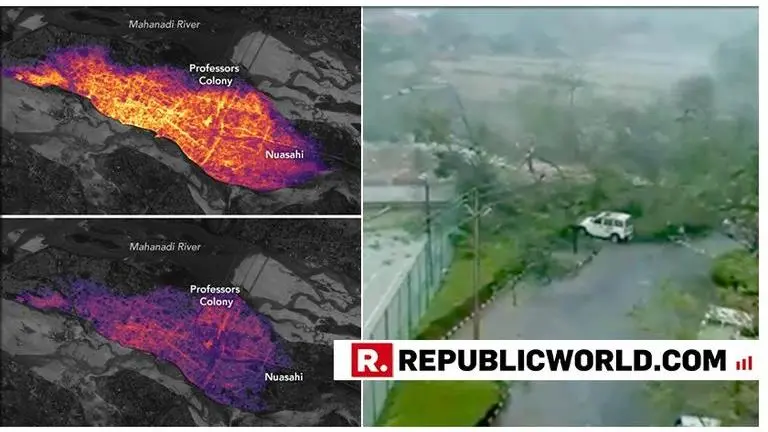Updated 18 June 2019 at 15:52 IST
Lights Out: NASA shares before and after photos of power outage in Odisha due to Cyclone Fani
Severe cyclonic storm Fani or the 'Hood of Snake' tore through the state of Odisha in eastern India, becoming of the worst storms to hit the country since 1999.
- India News
- 0 min read

Severe cyclonic storm Fani or the 'Hood of Snake' tore through the state of Odisha in eastern India, becoming of the worst storms to hit the country since 1999. The cyclone brought winds of more than 200 kmph when it made landfall in Odisha on May 3. The storm caused several deaths and rendered millions of people homeless in the cities of Puri, Bhubaneswar, Cuttack, and Khurda.
The cyclone left a trail of devastation in large parts of coastal Odisha, with the seaside areas being the worst hit.
Fani also damaged or destroyed energy infrastructure and many buildings, leaving around 3.5 million households without electric power for days after the storm hit.
The images on this page are data visualizations of where the lights went out across some of the worst affected areas in Odisha. The images show city lighting on April 30 (before the storm) and on May 5, 2019, two days after Fani made landfall. The storm destroyed several transmission towers and uprooted as many as 156,000 utility poles that must re-installed.
The images above show Bhubaneswar, the capital and largest city in the state. According to media reports on May 8, only a few percent of the people in the city have electricity. The Biju Patnaik International Airport suffered considerable damage to the passenger terminal, while the roof of the air traffic control tower was blown away.
Advertisement
The imagesshow nighttime lights in Cuttack, Odisha's second largest city, which lies just north of Bhubaneswar.
These images were made from data acquired by the Visible Infrared Imaging Radiometer Suite (VIIRS) on the Suomi NPP satellite. VIIRS has a “day-night band” that detects light in a range of wavelengths from green to near-infrared, including reflected moonlight, light from fires and oil wells, lightning, and emissions from cities or other human activity.
Published By : Digital Desk
Published On: 9 May 2019 at 09:52 IST

